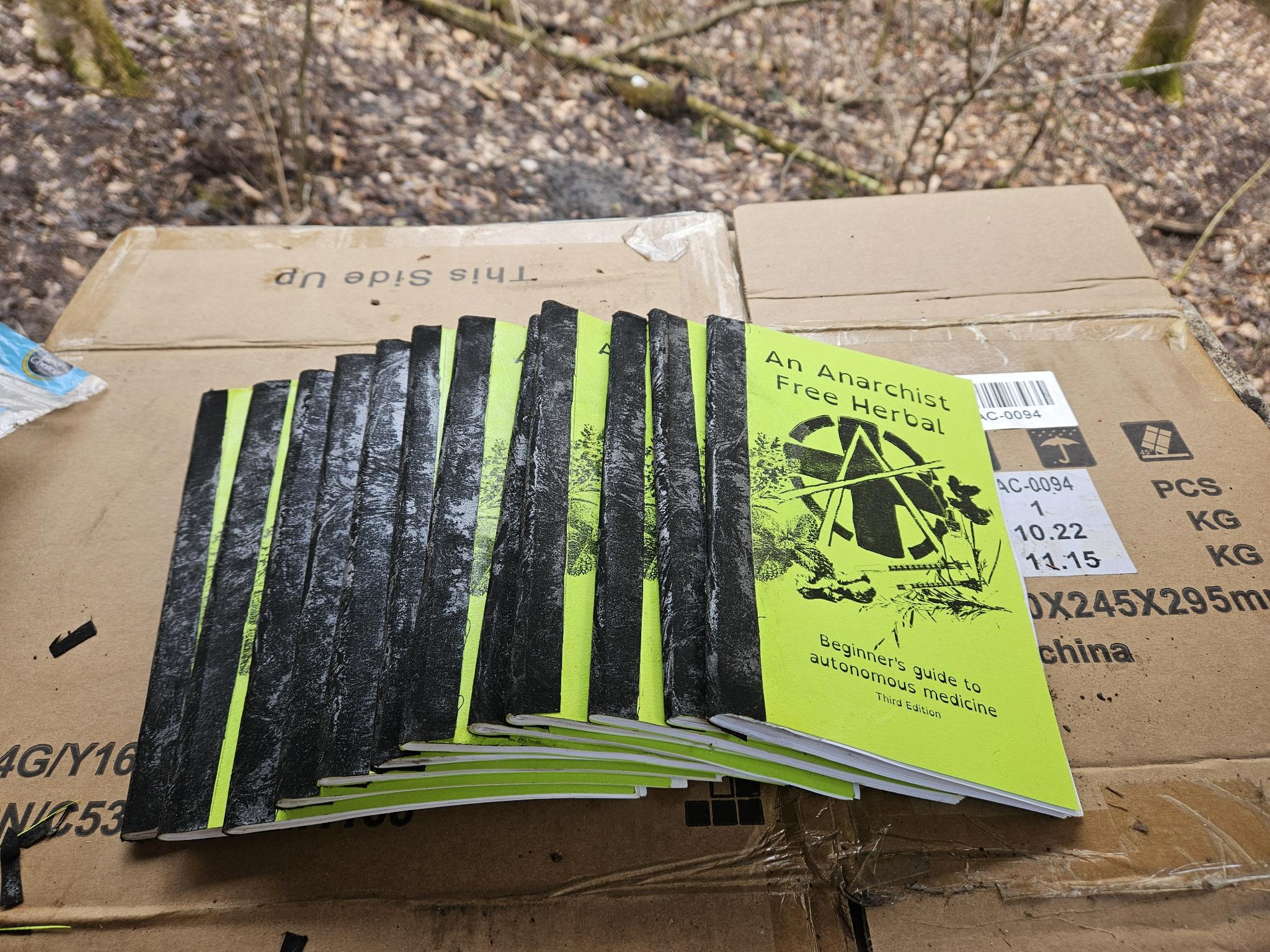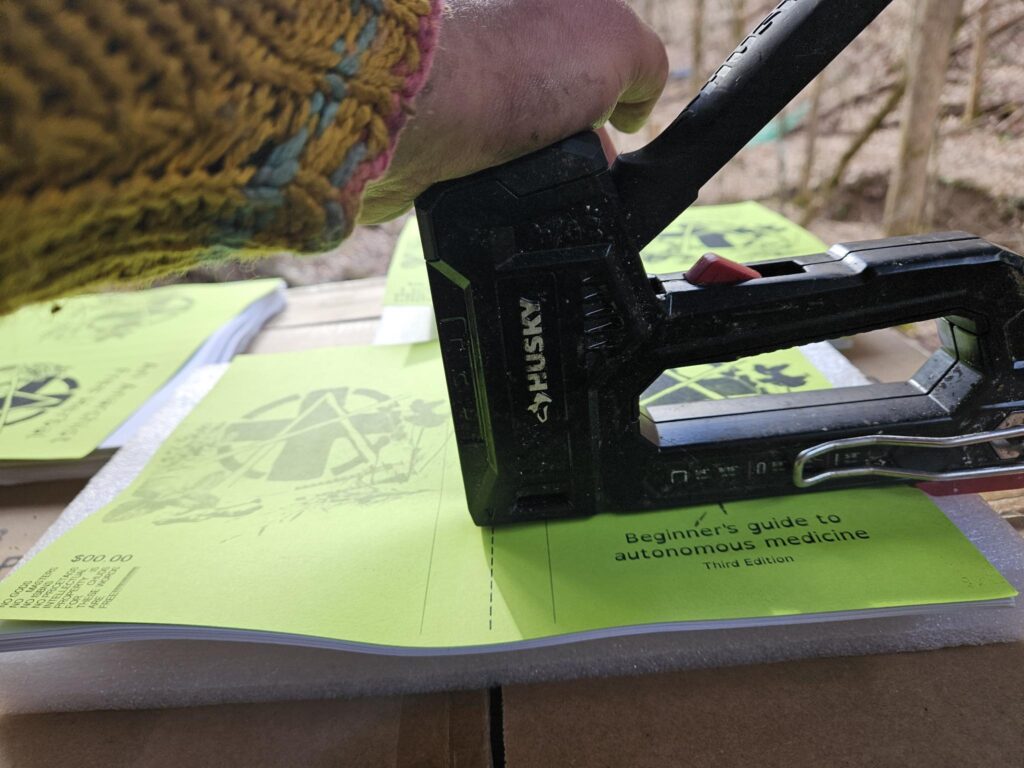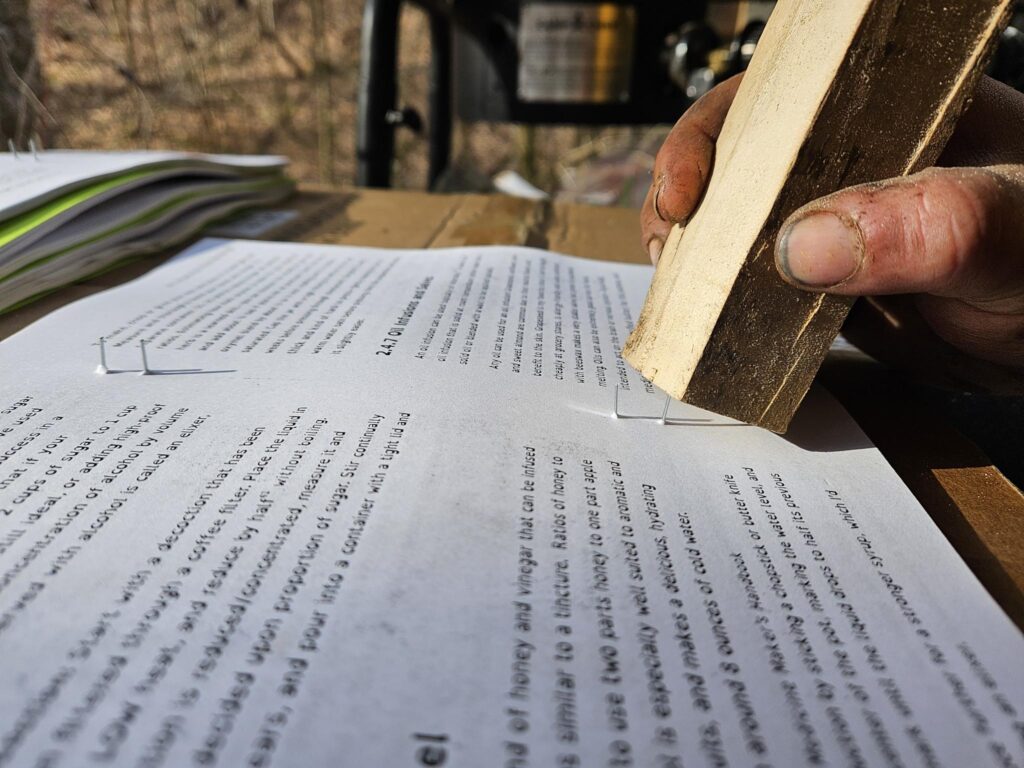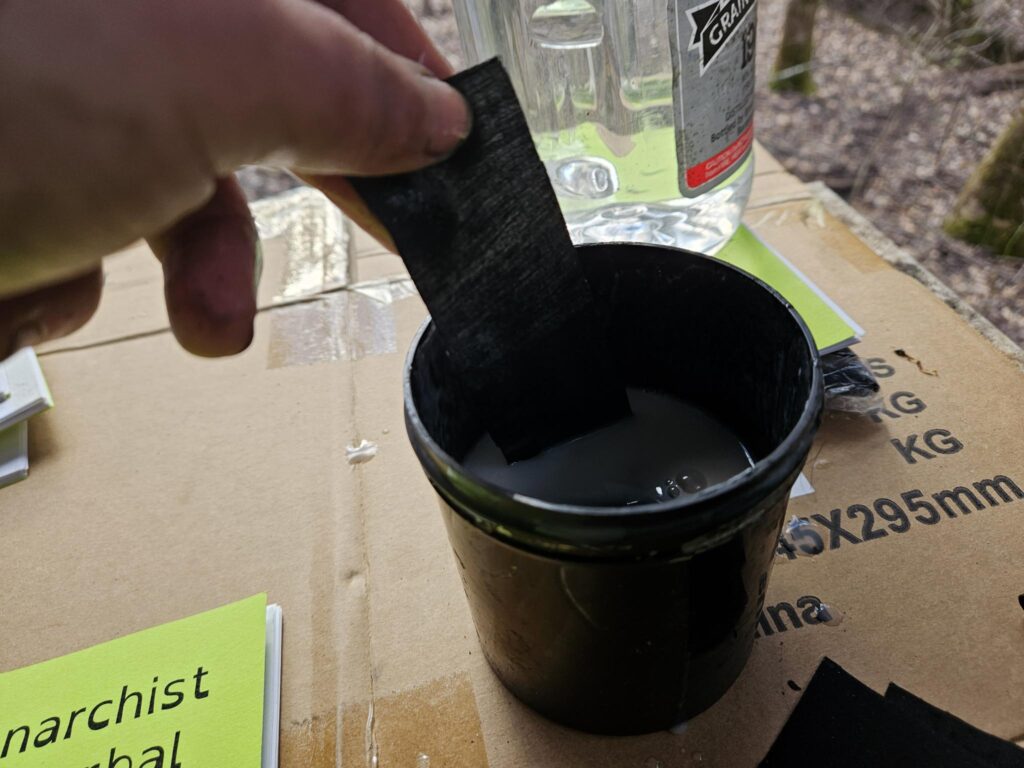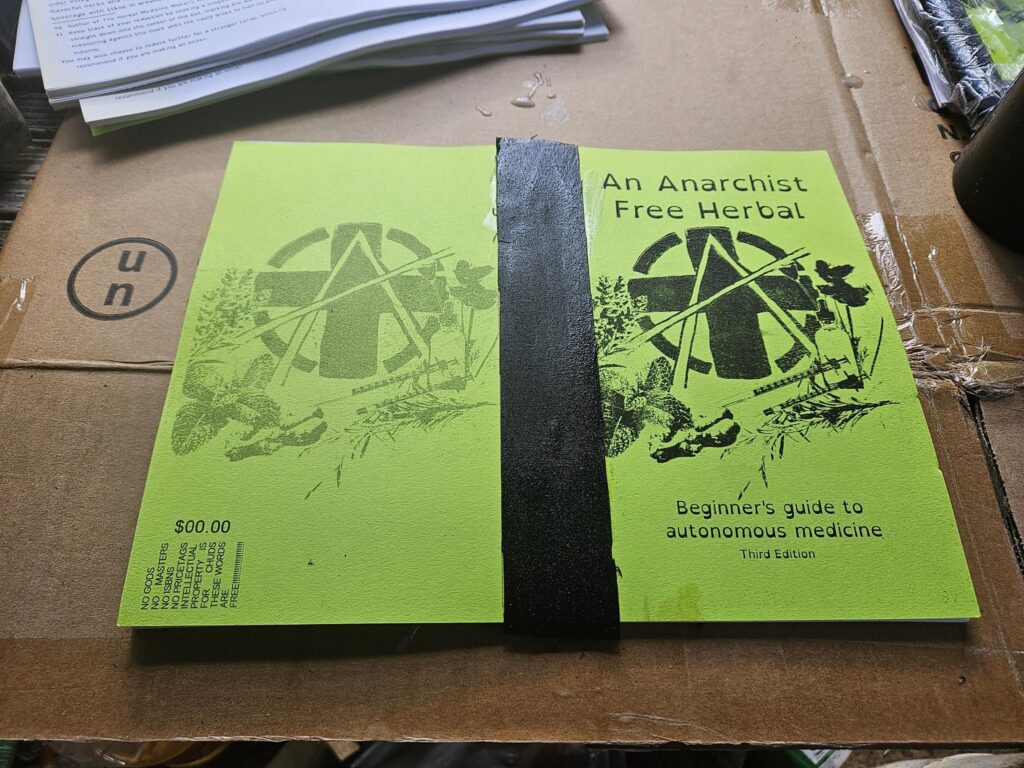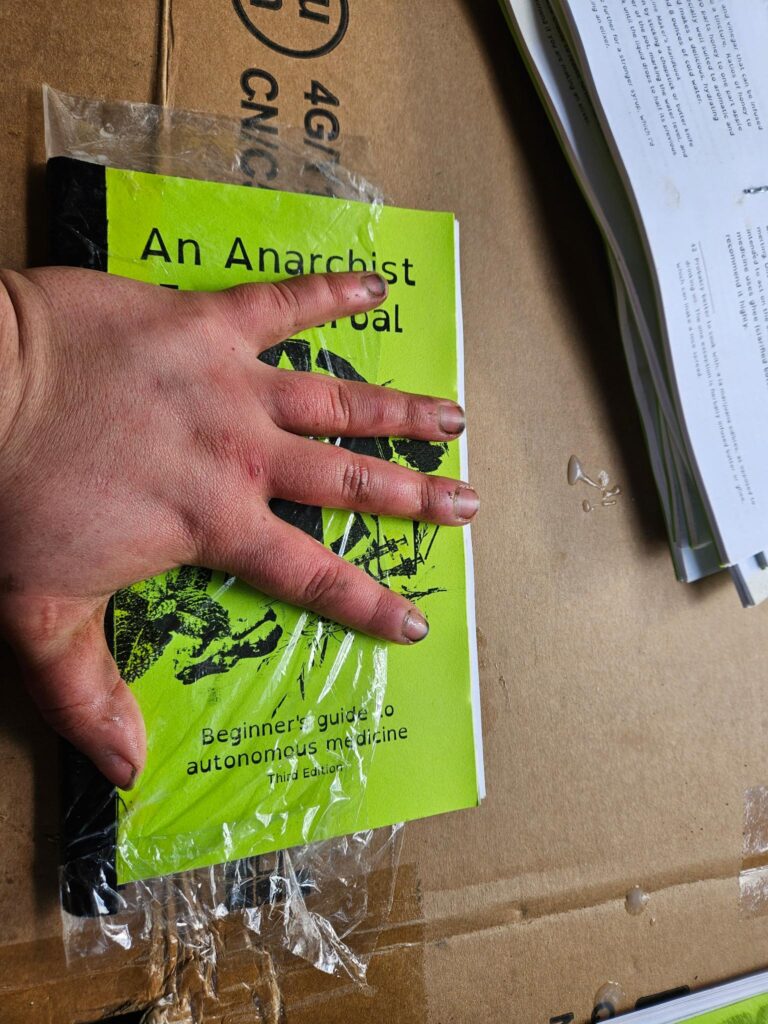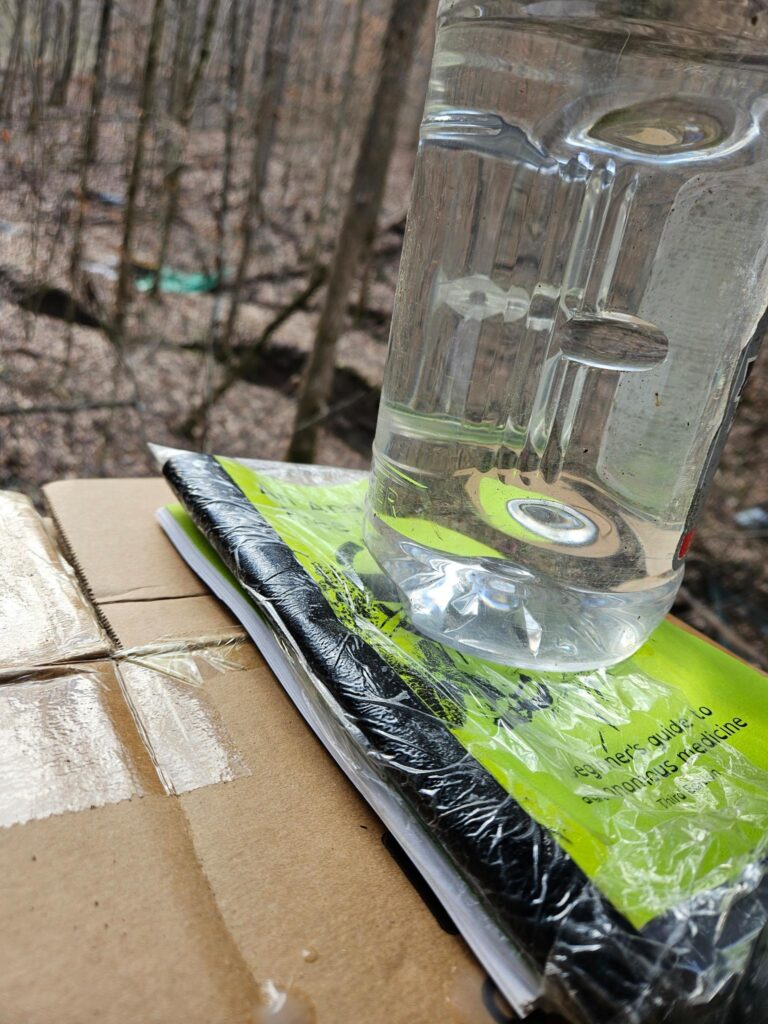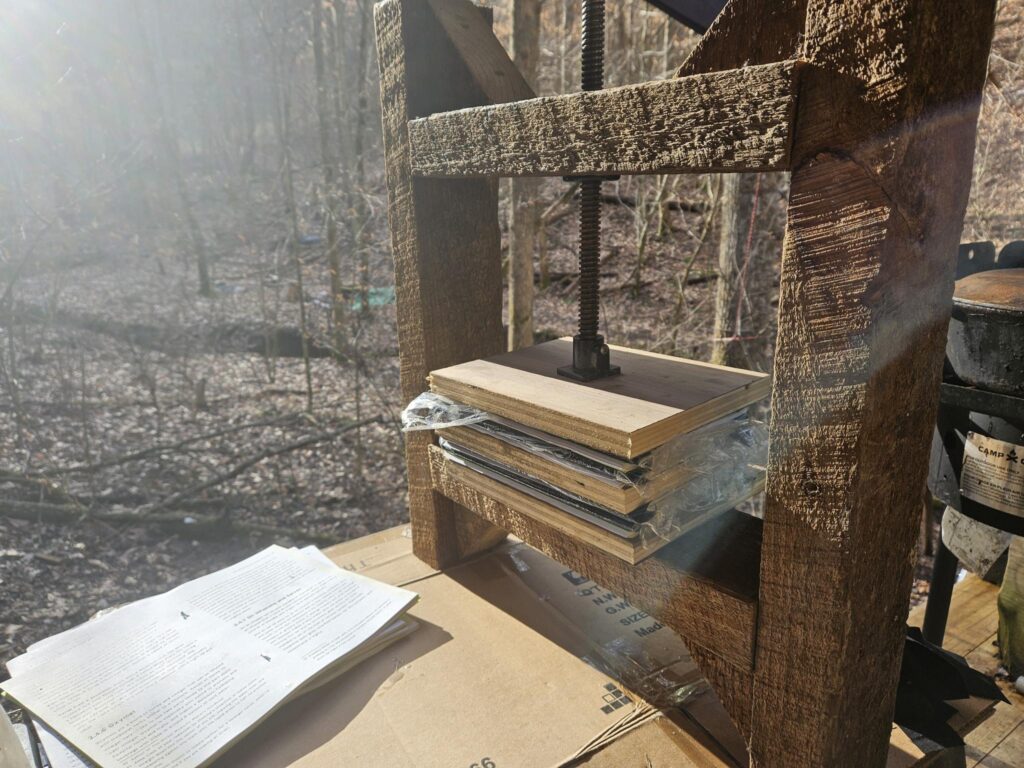For the past nearly half a decade, my friends and I have been slowly, (semi-)patiently orienting ourselves to achieve a goal: Move to the woods. A year ago, we did just that.
Goal #2: survive and thrive the rest of our lives and try to help our loved ones and community do the same.
We formed Appalachian Rhizomes, a project to share information, plant seeds and starts, and medicinal preparations in the hopes of expanding medicinal plant access–and as a way to help others in establishing medicinal plant gardens as a means of conservation through cultivation (although, that term doesn’t really feel like it suits me…conservation through ecological participation?) and community-scale resiliency in the face of climate collapse; a medicinal counterpart to many radical food forest projects. There’s currently a limited wordpress site, buuuuuut I’ll be honest I’m a pretty lousy Online Presence Coordinator (or whatever) & somehow managed to lose every piece of log in info to update it for this year, so, I’m working on building a nicer real website that will be released Sometime This Summer. Educational resources we’ll have available in the near future include a reading list of all the books that have been most helpful to us in preparing for and making this lifestyle change, as well as hopefully some abbreviated articles and how-to’s for stuff we’ve decided you really don’t need to read a whole book for (like building a composting toilet!). Long term, we’re working on compiling a field guide. It’s been a frustration for a long time that there are incredible, herbalist-made guides for the west coast by authors like Michael Moore and more recently Scott Kloos, but similar guides are nonexistant for our region…So i guess, we’re doing it. The current plan is to build an online resource with a similar format to rjwhelan.co.nz, with articles compiled from other herbalists’ accounts, any extant (usually very exploratory) scientific information, and our own personal experiences as we get to know more of the herbs in our area; and eventually publish those articles as a print resource.
The other thing we’re doing is…starting a business.
The plan is to start selling tinctures and other herbal products made from plants that are plentiful and responsibly harvestable here as well as some grown in our garden space; marketed towards folks who are already in the habit of buying tinctures from big-name brands like mountain rose, herb pharm, etc. We will be able to offer a lower price-per-ounce than most industrial herbal suppliers. We’re on track to launch this Fall with a slightly limited catalog including oft-pricey (& difficult to ethically source) favorites like goldenseal, garden classics like fresh-prepared lemon balm, as well as harder-to-find & lesser known friends like pedicularis; and we’ll be expanding our catalog to include medicinal mushrooms and other exciting offerings once the seeds we’ve sown have a chance to become established (some figurative, most literal). I was thinking about doing print catalogs, maybe with illustrations and a bit of trivia or poetry like Strictly Medicinals Seeds does–is that nuts or a good idea? I don’t want to deal with accepting orders by mail but I always prefer to shop for herbs with a paper thing in front of me that I can browse and then order online once I know what I’m getting. Anyway.
We’re doing this because, unfortunately, we currently live in a world where money is an important resource (duh). While we have the massive privilege of access to a space that doesn’t require rent to occupy, we live in an extremely rural area where jobs are scarce and the ones that do exist suck shit–which means living here requires either a dedication to becoming a mountain hermit for the foreseeable future, or access to savings, a well-paying online job, or locally-desirable professional qualifications and the ability to do those jobs without being untenably miserable. This applies to me as much as it does any of our precariously-housed or perpetually at-risk friends & community members we hope to be a more effective safety net for. I love my practice, I don’t plan on shutting it down, but relying on it as a sole source of income is pretty terrible for my mental health considering a large part of this as a job in the current landscape of the internet is being a small time public figure (and i make like, less than two bucks an hour if you count writing hours as something that should be paid–oof). Having a job that is tied to living here lets us be more secure, as well as act as a more reasonable safety net in our community where people have the option of leaving with more than they came with.
We had considered for a long time working within the medicinal herb supply chain as non-public facing farmers; and quickly learned that the margins on that are Actually Terrible and any reasonable income would require unsustainable and deeply harmful harvesting practices. No fucking thanks. By launching our own brand, we can make a lot more per pound of harvested plant material and be offering stuff made to our own standards and have it still be cheaper; and generate funding for a project I’m entirely more enthusiastic about.
Under the Appalachian Rhizomes banner, we are hoping to within the next year begin donating large amounts of herbal preparations to mutual aid crews in our general region; as well as offering customized hands-on training for folks that would like to skill up as mutual aid herbalists. The ideal version of this project is, well, rhizomatic; providing folks with training and supplies to get started while facilitating their own development of community-based herb growing projects. I’ve already made some connects with a few people we might be supporting in this way; but for the most part info about this (& how to get looped in) will be released in the fall and projects really under way as we have more time in the winter post-harvest season and business launch.
Other Stuff!
In addition to collaborating with the crew on the business scheming, Appalachian Rhizomes projects, and the general work it takes to live here, I’ve been putting together plenty of other stuff as well!
Life Skills Unschool
I know a large number of parents & other caretakers of children these days who are anxious about how to have conversations about ecological collapse with their kids, and worried that they don’t know how to prepare their kids for a life where many modern conveniences may become unavailable (due to supply chain collapse, economic failure, or both). As someone with a fair bit of experience in these skills as well as exposure to a lot of the varying spectrum of “outdoors” or self-sufficiency educational materials geared at children, I wanted to make something that covered practical skill introduction and a radical collapse-aware lens for kids and grownups alike; taking the form of a zine called “eco life skills for kids and grownups”.
Since I’m busy as hell and take forever to finish large projects, I’ve started releasing the projects and articles in the zine via a free substack called Life Skills Unschool as I complete them.
Fight the Hatman and Win
The other draft I’m slowly chipping away at is a zine aimed at students and shift workers called “Fight the Hatman and Win: Herbal Remedies for Sleep”. (I thought of the name while drunk and everyone I told it to said I needed to keep it, so. There will be an anime hatman on the cover.) This is a beginner-friendly guide to using herbalism for sleep issues, based on the frameworks I’ve built up in my own practice over the years.
This, too, will take a while to come out, so I’m considering hosting a one-off workshop called something like “Herbal support for persistent and resistant sleep trouble” (catchy, I know) with an abridged version of the zine content that’s more geared towards herbalists with more experience.
Fun with jewelweed
I’ve also just been having a lot of fun with jewelweed lately. It’s an extremely abundant herb in our area; and it’s finally big enough to harvest and try out some schemes I came up with over the winter. Jewelweed needs to be fresh to work well and doesn’t really seem all that oil soluble (my friend makes salves with it that they’re happy with, but honestly it’s not my bag–it ends up spoiling very quickly because there necessarily has to be a lot of water in the oil and I just really don’t feel like it’s that potent.) It’s also juicy, so i’ve been, well, juicing it–crushing the plant material, adding about 60% weight to volume rubbing alcohol, blending, and pressing the same day. We’ve been using it as a skin spray to deal with itchy/irritated skin while working on garden projects and prevent poison ivy. It makes a really lovely slimey liquid that helps a lot with bug bites, and the plant properties combined with the high alcohol content make for a super cooling and refreshing sensory experience. I’m going to be playing around with using the juice as the waters in creams and lotions, and I’m very excited about that.
On we go…
Frankly, I’ve been really exhausted and depressed lately…which makes it strange that I’ve been able to keep up with a fairly unprecedented level of consistent productivity for months now. I’m very used to being miserable, but I’m not used to being tired, sad, anxious, and… fine? Functional, noncatestrophic, generally happy with my life, and feeling like the day to day sludge is somehow fundamentally worth it because I like who and where I am now. Wild, huh? We’ll see where this goes.
